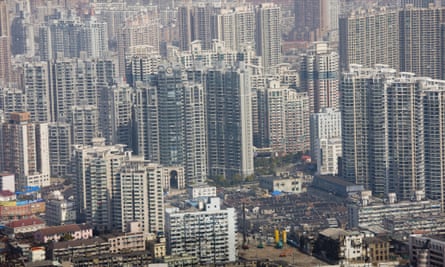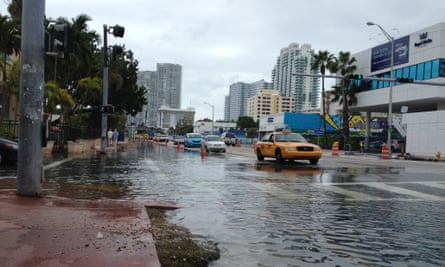“Sitting constantly in dilapidated cars wrecks their spines, and the ceaseless shouting that goes on in the streets of Cairo destroys their nervous systems,” Khaled Al Khamissi wrote in his 2007 book Taxi, a collection of conversations with 58 of Cairo’s 80,000 taxi drivers. “The endless heavy traffic drains them psychologically and the struggle to make a living … strains the sinews of their bodies.”
It’s a depressing portrait of life in Egypt’s bustling capital. Could it be that Cairo, the “mother of the world”, is one of the most stressful places on the planet? Or does it all depend on how you make your living there?
It’s no surprise to learn that living in a city – any city – is generally more stressful than life in a rural idyll. But neuroscientist Andreas Meyer-Lindenberg and his team at the Central Institute of Mental Health in Mannheim, Germany, are trying to get to the root of what makes the city environment so stressful. In 2011, they published a study in the journal Nature showing that, compared to people who live in the countryside, city-dwellers are hyperactive in a region of the brain called the amygdala, which is linked to depression and anxiety.

Now, they’re using the same technique – based on scanning people’s brains while they stress out over mental arithmetic – in a larger, follow-up study. “We know now that cities as a whole are causal, but of course we need to work out which aspects of the city are causal,” says Meyer-Lindenberg. “So we are using that approach to look at individual components of city risk, which might range from toxins, to noise, to lead pollution, to social factors.”
While their work focuses on European cities, Meyer-Lindenberg says these may be less interesting examples than some of China or Brazil’s rapidly developing megacities, which are still in the midst of the urbanisation process. Take Shanghai, for instance. Quite aside from the worrying prospect of dying of overwork, there’s the sheer density of people, housing and traffic to contend with. The Shanghai urban area is home to more than 23 million people: 119,000 per sq mile in the inner city, way above that of Paris or Manhattan. Space on the roads is at such a premium that the government has introduced a lottery-style system for issuing a restricted number of new licence plates each month.
The link between population density and health is not new. Early in the 20th century, planners and public health officials established what they determined to be a healthy housing density of around 12 units per acre. Rebecca Miles, a planning researcher at Florida State University, dug up this figure in a document from the late 1900s. The numbers can be debated, but Miles agrees there’s a balance to be had between creating lively, social communities and being so close to your neighbours that it becomes unpleasant.
What planners back then didn’t factor in, however, was the exponential growth of the motor car. In 1900, there were only 8,000 registered motor vehicles in the United States. By 1950, there were more than 49 million, and 40 million of these were cars. Today, traffic density may be just as much to blame for stress as people density. But is there any evidence linking traffic to stress?

Miles carried out a study on “urban form” and depression in Miami – incidentally ranked seventh in Time magazine’s list of America’s most stressed-out cities. It showed that people living in parts of the city with higher traffic volumes had more symptoms of depression. “So it’s the density in conjunction with the traffic volume,” says Miles, noting that the study also supported the theory that green space alleviates stress and depression. “I think the benefit of the kind of work we did and that others are doing is to draw attention to these factors, recognising that density and traffic volumes have mental health impacts as well as in some cases physical health impacts.”
The Miami study used traffic volumes as a proxy for traffic noise, a well-recognised source of stress in the urban environment. Recent research in the Dutch city of Maastricht, for example, found that residents in neighbourhoods exposed to more traffic and railway noise reported being in a worse state of mental health. Underlying the link between noise and health is the “general stress model”, which suggests that noise activates the nervous system, as well as stress hormones, and raises blood pressure. It also contributes to poor quality sleep – a risk factor for depression and anxiety.
Cairo is considered to be one of the noisiest cities in the world. Its bad reputation, says Daniel Pope, a noise specialist for the UK-based engineering firm Atkins, is down to very narrow streets bordered by tall buildings, which create corridors of noise. The difficulty with trying to align noise and stress levels, however, is that what annoys one person won’t necessarily annoy another. “It is very subjective,” Pope says. “Some people who live in a city may go out to the countryside and find that all the animal sounds disturb them. Some people might come into the city and find that every car that passes by at night disturbs them. There’s a very large factor of what you’re used to.”

It’s not just the noise though. It’s the noise, the commuting times and even, potentially, the particulate matter, a component of vehicle emissions that was recently linked to anxiety. Cairene taxi drivers sit right at the centre of all of this. Add to that a population density only just shy of Shanghai’s and it’s hardly surprising if “the mother of the world” is a little stressed out. Hardly surprising – but as with any megacity, there are still stark differences in stress levels depending on who you are, and which neighbourhood you inhabit there.
Take Mumbai, where each person has less than five sq m to call their own. For Carlin Carr, an American working on urban poverty issues there, it’s a city of contradictions, where the stresses exist on a deeper level than just having to sit in traffic. “Mumbai forces you to witness the raw fight for survival every day,” says Carr. “It’s heart-wrenching to see a mother begging for food to feed her child, and rag-pickers sorting heaps of trash for a few rupees. These stresses are born out of the massive inequality in the city and the major lack of resources to provide Mumbaikars with the most basic of needs. Yet, despite this, I think it’s true to say that Mumbai can be free of many of the stresses of normal urban life.”
Carr is referring to the many Mumbaikars who hire cooks, cleaners, childminders and chauffeurs to relieve themselves of many of life’s daily stresses. Money can indeed go a long way to circumvent the stress of cities: it’s often the most deprived neighbourhoods that are located near major roads, railway lines and airports, either because those on lower incomes can’t afford to move away or because to live cheaply in the city, they have no choice but to move there. The same pattern is seen around the world, from Paris to Hong Kong.

When it comes to planning, it’s usually the more obvious stresses that are addressed first. Common suggestions for ways to take the stress out of the urban environment are encouraging active travel, building better public transport systems and improving access to green space.
Green space is one that gets mentioned a lot, because there’s good evidence for links to mental health, as supported by Miles’s study on depression in Miami. “Exposure to greenery is positive for mental health, as well as being active in it,” says Miles. “That’s an important distinction to make, because there’s a lot of discussion of the benefits of physical activity, but even exposure to greenery is very good for mental health.”
London, by some estimates, comprises 47% green space. The trouble is that deprived neighbourhoods tend to have limited access to these spaces – a problem highlighted in the 2010 Marmot Review, which addressed health inequalities across England. The review recommended ensuring access to good quality green spaces right across the social gradient.
Perhaps there are cities we can look to as shining examples: stress-free cities that prioritise the mental health of their citizens? There are very few, says Victoria Pinoncély, a researcher at the Royal Town Planning Institute, but she proposes Bogotá in Colombia as an example of a major city that is at least attempting to make itself more liveable.
With a population of around eight million and rising, Bogotá hasn’t yet reached the ranks of megacity – but others, including Mexico City and Guangzhou, do have designs on its transport system. Its 350km of CicloRuta (bike paths) and TransMilenio (rapid bus system) make for a more pleasant travel experience than in other expanding cities.
Examples of good planning can also be found closer to home, too, Pinoncély says, albeit on a smaller scale. “In Bradford town centre, there’s this public space called City Park, which provides a place where you can socialise and relax, and where there’s no car traffic. That’s the kind of initiative that I think would be promoting better mental health and stress relief.”
In the developing world, however, there are not the same resources to devote to mental health and, as Pinoncély points out, a lack of data means the true impacts of traffic, overcrowding and poor housing conditions simply aren’t known.
In Cairo, gleaming tower blocks on one side of the road reflect the dusty jumble of informal settlements on the other. It is clear that stress comes in many forms. There’s the type you’ll experience by sitting in a traffic jam for three hours, and the type that comes with surviving on a meagre wage. Taxi-driving doesn’t earn you a decent living in this city, so many cabbies are unfortunate enough to experience both.
Hayley Birch writes about science and the environment from Bristol, UK. Follow Guardian Cities on Twitter and Facebook to join the discussion

Comments (…)
Sign in or create your Guardian account to join the discussion